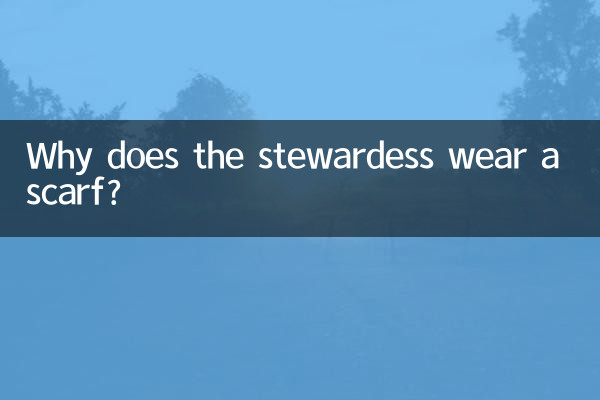Why do stewardesses wear scarves? Uncover the story behind this professional symbol
Recently, discussions about the professional attire of flight attendants have become a hot topic on social media. In particular, the iconic silk scarf accessories of flight attendants have aroused widespread curiosity. This article will combine the hot discussions on the Internet in the past 10 days and use structured data analysis to reveal the multiple meanings behind this career detail.
1. Overview of hotspot data across the entire network (last 10 days)

| platform | Amount of related topics | Maximum heat value | Keywords TOP3 |
|---|---|---|---|
| 286,000 | 120 million | Professional Image/Aviation Safety/Fashion Matching | |
| Tik Tok | 154,000 | 89 million | Uniform Aesthetics/Scarf Tying Method/Airlines |
| Zhihu | 3200+ | 6.7 million | Industry norms/historical origins/cultural symbols |
2. Analysis of the five core functions of silk scarves
| Function type | Specific role | Airlines case |
|---|---|---|
| Occupational identification | Strengthen professional image recognition | Air China classic purple scarf |
| Security protection | A tourniquet can be used in emergencies | ANA first aid training content |
| Image management | Modify neck line | Emirates three-dimensional folding method |
| Brand communication | Carrying enterprise VI system | Singapore Airlines batik pattern |
| cultural inheritance | Continuing aviation industry tradition | British Airways retro silk scarf design |
3. Historical evolution and industry evolution
According to data from the Civil Aviation Archives, silk scarves have been standard equipment for flight attendants since the 1950s, when Pan Am first introduced the accessory. Early silk scarves mainly served practical functions: in the era of propeller planes, they were used to fix hairstyles, clean mirrors, and even serve as makeshift masks. With the advent of the jet age, it gradually evolved into an important component of image engineering.
4. Comparison of contemporary airline silk scarf designs
| airline | Material | Dimensions(cm) | Featured craftsmanship |
|---|---|---|---|
| Air China | 100% mulberry silk | 90×90 | Hand rolled edge |
| air france | silk cotton blend | 70×70 | embossed print |
| Japan Airlines | polyester fiber | 80×80 | Anti-wrinkle treatment |
5. Hot topics of discussion among netizens
According to data from the Douyin platform, videos in the category "Stewardess Silk Scarf Tying Tutorial" have been viewed an average of 2.4 million times, with "French Knot" being the most popular. Zhihu’s popular discussion focused on the issue of gender equality in professional attire and received 128,000 interactions. In Weibo's super chat # Aviation Uniform Archeology #, users posted silk scarf designs from various airline companies through the ages, triggering a nostalgic craze.
6. Expert opinions
An image and etiquette expert from the Civil Aviation Administration of China pointed out: "Silk scarves create a subtle psychological distance in cabin service, which not only maintains a sense of professionalism but also increases affinity." An aviation safety researcher added: "Modern silk scarves need to pass flame retardant tests, and their materials must comply with the regulations of the Civil Aviation Department CCAR-25."
From historical traditions to modern functions, the stewardess silk scarf, a seemingly simple accessory, actually embodies the professionalism and service aesthetics of the aviation industry. Next time you fly, you may wish to pay attention to the cultural codes hidden in the scarves of different airlines.

check the details

check the details